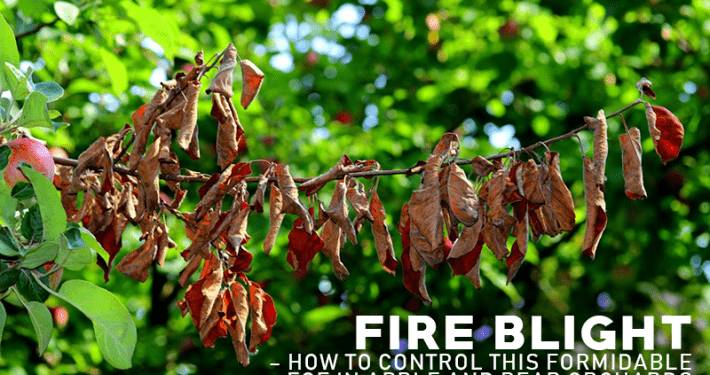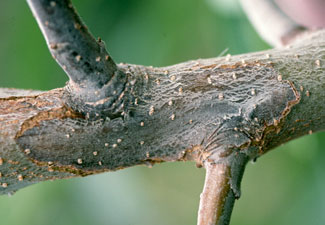
Some recommendations suggest an ugly stub cut where growers make cuts 20-30 cm below visible symptoms into two-year-old or older wood leaving a 10 to 12 cm naked stub. Removing infected tissue quickly increases the likelihood of removing more pathogen cells before they invade deeply into the tree. Young, vigorous or susceptible varieties will require cutting further.

Cut AT LEAST 12 to 18 inches below the noticeably infected area into two year or older wood in order to remove the highest concentration of pathogen cells. By cutting a branch we hope to remove many of these cells so that they cannot flow through the tree where they may concentrate in other susceptible tissue and create new infections. The highest concentration will be near the tip of the branch or infected floral cluster.

You May Like: Propane Fire Pit With Glass Rocks Cutting Fire Blight Infections In Season Cut hard, cut fastĪn infected shoot has many millions to billions of pathogen cells. Since this growth is fast-growing and tender, it is vulnerable to infection. Burn and destroy the affected branches if possible.ĭuring any season, be sure to also remove tree suckers and watersprouts. Prune off all infected branches at least 8 inches below the blighted area. Remove the blighted wood from infected shrubs and trees, as this helps prevent the disease spreading. Move them away from the trees and destroy them do not add to compost! This will prevent the bacteria from overwintering in the debris and then spreading. Collect all pruning debris, mummified fruit, and fallen leaves. Be sure to do a complete cleanup around your trees when fall rolls around. Fertilizers should only be used to supplement nutrients in soils that are lacking them.Ĭleanup. A soil test will help you determine whether or not your soil even needs a fertilizer application. To avoid this susceptibility to fire blight in your trees, especially if you live where fire blight is a known issue, it is recommended that you use a low-nitrogen fertilizer during the growing season and only fertilize when necessary. Any excessive amount of new growth on your tree is easily susceptible to fire blight infection. In high-pressure areas, your best defense is likely going to be a combination of cultural practices, cleanup, and manual/chemical control methods.Ĭultural practices. Managing Fire Blight In Affected Fruit Trees Outbreaks of fire blight occur periodically in British Columbia pear and apple orchards. It causes severe blighting of blossoms, shoots, limbs and fruit. Scrupulously remove all prunings and infected material well away from the infected tree and burn it.įire blight is a destructive bacterial disease of apple, pear and other related species such as hawthorn, quince and mountain ash. This may result in a badly shaped tree but if not done the tree will almost certainly die. Cut away any infected wood at least 15cm / 6in further back from the infection.

RHS Hampton Court Palace Garden Festival - 2–7 July 2024.Malvern Autumn Show - 22–24 September 2023.RHS Garden Wisley Flower Show - 5–10 September 2023.RHS Garden Rosemoor Flower Show - 18–20 August 2023.RHS Garden Hyde Hall Flower Show - 2–6 August 2023.RHS Flower Show Tatton Park - 19–23 July 2023.


 0 kommentar(er)
0 kommentar(er)
